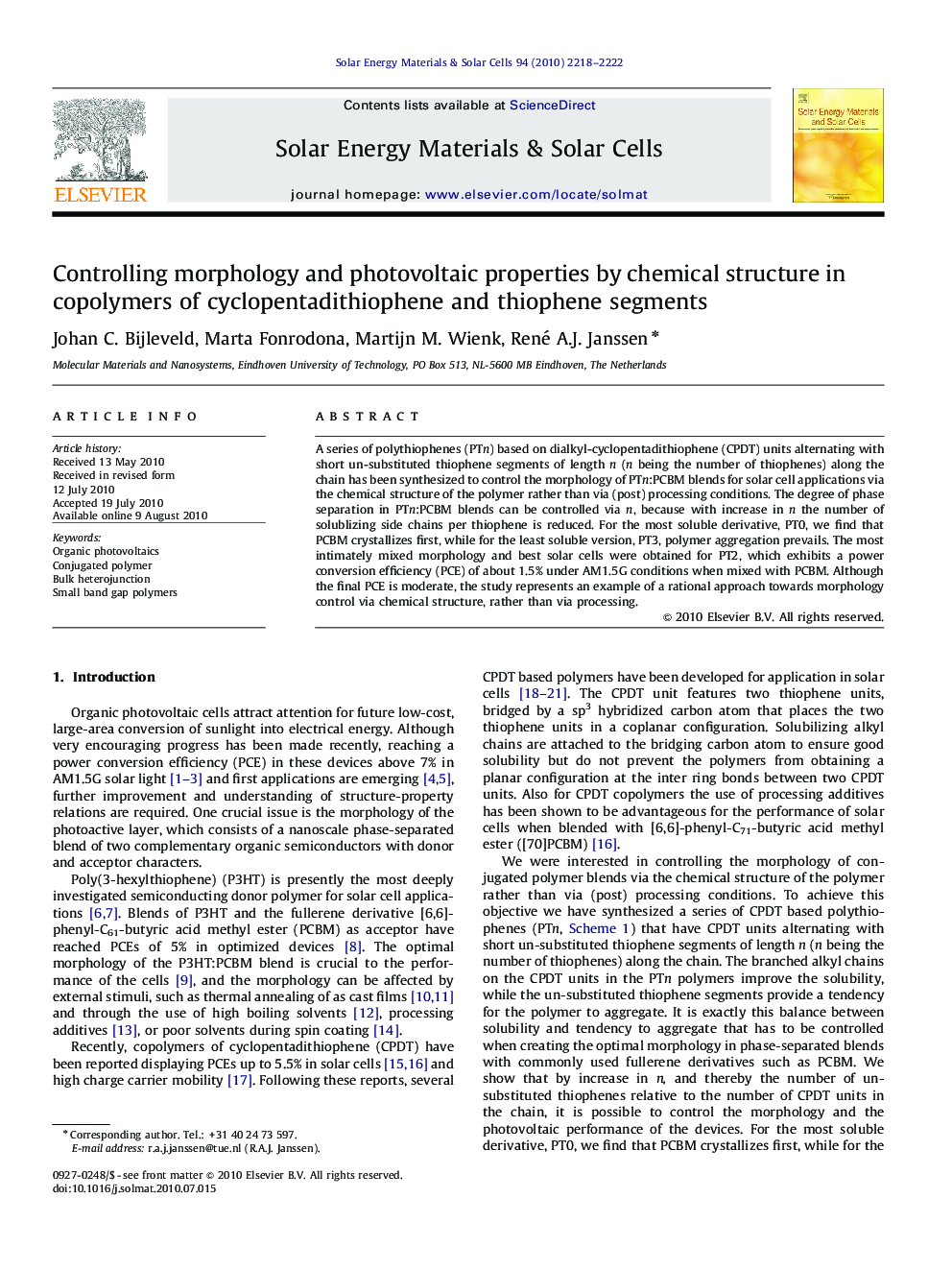| Article ID | Journal | Published Year | Pages | File Type |
|---|---|---|---|---|
| 79830 | Solar Energy Materials and Solar Cells | 2010 | 5 Pages |
A series of polythiophenes (PTn) based on dialkyl-cyclopentadithiophene (CPDT) units alternating with short un-substituted thiophene segments of length n (n being the number of thiophenes) along the chain has been synthesized to control the morphology of PTn:PCBM blends for solar cell applications via the chemical structure of the polymer rather than via (post) processing conditions. The degree of phase separation in PTn:PCBM blends can be controlled via n, because with increase in n the number of solublizing side chains per thiophene is reduced. For the most soluble derivative, PT0, we find that PCBM crystallizes first, while for the least soluble version, PT3, polymer aggregation prevails. The most intimately mixed morphology and best solar cells were obtained for PT2, which exhibits a power conversion efficiency (PCE) of about 1.5% under AM1.5G conditions when mixed with PCBM. Although the final PCE is moderate, the study represents an example of a rational approach towards morphology control via chemical structure, rather than via processing.
